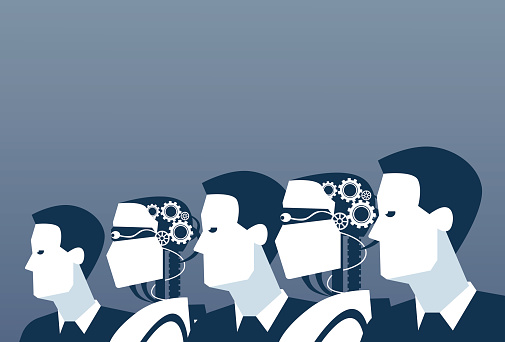
©gmast3r/ISTOCK/THINKSTOCK
The trouble with business terminology is that it can be hard to pin down. It often seems to mean different things in different contexts (think of the word “sustainable,” for instance).
Which is why, when considering the concepts of finance automation and artificial intelligence (AI), it’s a good idea to look for two things.
Five senses
The first is a workable analogy. If you draw a parallel, things can make more sense.
The first sense, “watching,” describes the intelligent monitoring and recording of key business data in order to create knowledge. The next element, “talking and listening,” refers to the ability to interact with end-users of the AI solution through listening, reading, talking, writing and responding. “Acting” is the ability to act on knowledge and provide a service. “Thinking” represents the ability to detect patterns, recognize trends and analyze information. The fifth and final sense, “remembering,” expresses the ability to store and find information and knowledge effectively, using components such as databases and search engines.
It’s a pretty good analogy, but it only really comes into its own when we stop thinking of those senses individually, and connect them to create an intelligent automation platform. While the application of each individual sense improves a process, it’s the interaction between the senses that delivers true intelligence and all the benefits it brings.
Learning from others
Yes, an analogy is a great way to understand business terminology – but examples are even better. When you’re shown how other people are putting it into practice, you’re no longer just being told what it might mean: you can see it for yourself, and you can see its benefits.
As part of a study recently commissioned by Capgemini, CFOs who are setting the pace not just among their peers, but also within their own organizations, referred to as “Masters,” were asked about their progress and their expectations. What did finance automation mean to them?
It meant some very practical and useful things. For example, 60 percent of them said that within three years, automation will be helping them to improve their customers’ experience, and 55 percent said it would help to unlock new insights that drive value for the business.
They also substantiated an aspect of our analogy: in their experience, interaction delivers greater benefits. As many as 85 percent of them said the business as a whole was also pursuing an automation strategy, while 51 percent reported that automation was being led at enterprise level by a dedicated team.
Real-world benefits…
So much for examples by opinion. What about examples by output? The same study showed Masters often enjoy higher revenue growth than those termed “Novices”: 26 percent of the former group have experienced revenue growth of 10 percent or higher over the past three years, compared with only 6 percent of the latter group.
A company in Denmark provides another illustration. Danfoss manufactures industrial and commercial heating, ventilation and air conditioning systems. A recent overhaul of finance functions included the implementation of appropriate automation and robotics for a variety of processes. This included the verification process, foreign exchange rate updates, and intercompany reconciliations.
The benefits that Danfoss has achieved include significant improvement in customer collections; improved accuracy in all accounting processes; 56 standardized record-to-report (R2R) processes; and the creation of an intercompany hub, leading to faster closing of all transaction types globally and a reduction in closing period from seven working days to five working days. What’s more, all of this has resulted in reduced manual interventions and error rates.
… delivered
When you’re looking at terms like intelligent automation, it might seem completely alien to areas such as finance. Sound analogies, and the opinions of those who are blazing a successful trail, help make sense of it all in context – but the best explanation of all is the one that describes not what it is, but what it can really do.
And the answer? Finance automation delivers.
Carole Murphy is the Head of Business Transformation Services at Capgemini.